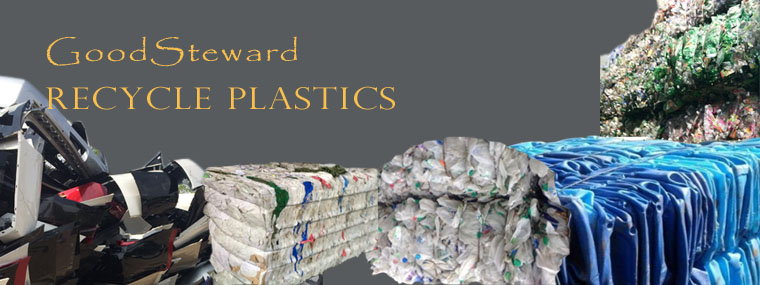Plastics play an important role in almost every aspect of our lives. Plastics are used to manufacture everyday products such as beverage containers, toys, and furniture. The widespread use of plastics demands proper end of life management. Plastics make up almost 13 percent of the municipal solid waste stream, a dramatic increase from 1960, when plastics were less than one percent of the waste stream. The largest amount of plastics is found in containers and packaging (e.g., soft drink bottles, lids, shampoo bottles), but they also are found in durable (e.g., appliances, furniture) and nondurable goods (e.g., diapers, trash bags, cups and utensils, medical devices). The recycling rate for different types of plastic varies greatly, resulting in an overall plastics recycling rate of only 9 percent, or 2.8 million tons in 2012. However, the recycling rate for some plastic products is much higher, for example in 2012, 28 percent of HDPE bottles and 31 percent of PET bottles and jars were recycled.
Just the Facts
- 32 million tons of plastic waste were generated in 2012, representing 12.7 percent of total MSW.
- In 2012, the United States generated almost 14 million tons of plastics as containers and packaging, about 11 million tons as durable goods such as appliances, and almost 7 million tons as nondurable goods, such as plates and cups.
- Only 9 percent of the total plastic waste generated in 2012 was recovered for recycling.
- In 2012, the category of plastics which includes bags, sacks, and wraps was recycled at about 12 percent.
- Plastics also are found in automobiles, but recycling of these materials is counted separately from the MSW recycling rate.
How Plastics Are Made
Plastics can be divided in to two major categories: thermosets and thermoplastics. A thermoset solidifies or “sets” irreversibly when heated. They are useful for their durability and strength, and are therefore used primarily in automobiles and construction applications. Other uses are adhesives, inks, and coatings.
A thermoplastic softens when exposed to heat and returns to original condition at room temperature. Thermoplastics can easily be shaped and molded into products such as milk jugs, floor coverings, credit cards, and carpet fibers.
Plastics Recycling
According to the American Chemistry Council, about 1,800 US businesses handle or reclaim post-consumer plastics. Plastics from MSW are usually collected from curbside recycling bins or drop-off sites. Then, they go to a material recovery facility, where the materials are sorted by plastic type, baled, and sent to a reclaiming facility. At the facility, any trash or dirt is sorted out, then the plastic is washed and ground into small flakes. A flotation tank may be used to further separate contaminants, based on their different densities. Flakes are then dried, melted, filtered, and formed into pellets. The pellets are shipped to product manufacturing plants, where they are made into new plastic products.
Resin Identification Code
The resin identification coding (RIC) system for plastic, represented by the numbers on the bottom of plastic containers, was introduced by SPI, the plastics industry trade association, in 1988 and transferred to ASTM International in 2010. Municipal recycling programs traditionally target packaging containers, and the RIC system offered a way to identify the resin content of bottles and containers commonly found in the residential waste stream. Plastic household containers are usually marked with a number that indicates the type of plastic. Consumers can then use this information to determine whether or not certain plastic types are collected for recycling in their area. Contrary to common belief, just because a plastic product has the resin number in a triangle, which looks very similar to the recycling symbol, it does not mean it is collected for recycling.
SPI Resin Identification Code 1 2 3 4 5 6 7 Type of Resin Content PET HDPE Vinyl LDPE PP PS OTHER
- PET - Polyethylene Terephthalate
- HDPE - High-density Polyethylene
- LDPE - Low-density Polyethylene
- Vinyl - Poly Vinyl Chloride
- PP - Polypropylene
- PS - Polystyrene
- Other - Mixed Plastics
Markets for Recovered Plastics

Markets for some recycled plastic resins, such as PET and HDPE, are stable and even expanding in the United States. Currently, the US has the capacity to be recycling plastics at a greater rate. The capacity to process post-consumer plastics and the market demand for recovered plastic resin exceeds the amount of post-consumer plastics recovered from the waste stream. The primary market for recycled PET bottles continues to be fiber for carpet and textiles, while the primary market for recycled HDPE is bottles, according to the American Chemistry Council. PET is also recycled into clothing, such as fleece jackets. Recovered HDPE can be manufactured into recycled-content landscape and garden products, such as lawn chairs and garden edging. Recovered LDPE bags and films are used to manufacture polymer lumber for decks and fencing.
Source Reduction
Source reduction is the process of reducing the amount of waste that is generated. The plastics industry has successfully been able to reduce the amount of material needed to make packaging for consumer products. Plastic packaging is generally more lightweight than its alternatives, such as glass, paper, or metal. Lighter weight materials require less fuel to transport and result in less material in the waste stream.
Source: http://www.epa.gov/epawaste/conserve/materials/plastics.htm





